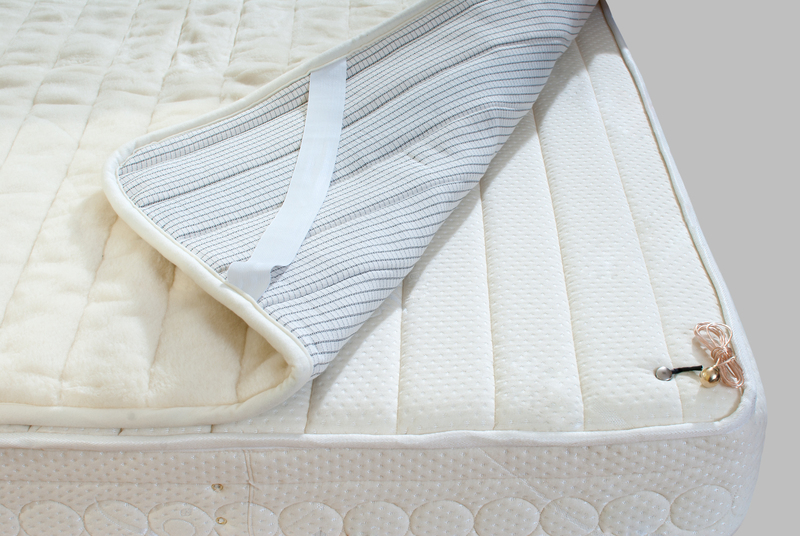Hassle-Free: Clean Enamel Oven Trays in Minutes
Posted on 27/03/2025
Cleaning enamel oven trays can be a daunting task. The burnt food and grease can seem like they have taken up permanent residence on your trays. However, it doesn't have to be this way. With the right techniques and tools, you can have your enamel oven trays looking brand new in just a few minutes. This guide will take you through step-by-step instructions, share some tips and tricks, and discuss the pros and cons of different cleaning methods.
Why Enamel Oven Trays?
Before diving into the cleaning methods, it's essential to understand why enamel oven trays are popular. These trays are highly durable, resistant to high temperatures, and do not react with food, making them perfect for all kinds of baking and roasting tasks. However, like any kitchenware, they require proper maintenance to remain effective and long-lasting.

Materials You'll Need
To clean enamel oven trays efficiently, you'll want to gather the following materials:
- Baking soda
- Vinegar
- Lemon juice
- Dish soap
- Scrub brush or sponge
- Paper towels or clean cloth
- A large bowl or basin
Step-by-Step Cleaning Guide
1. Pre-soak the Trays
One of the most effective ways to make cleaning easier is pre-soaking the trays. Fill a large bowl or basin with hot water and add a few drops of dish soap. Submerge the trays and let them soak for at least 30 minutes. This softens any caked-on grime and makes it easier to clean.
2. Create a Baking Soda Paste
While the trays are soaking, create a paste by combining baking soda with a little water. The consistency should be thick enough to stick to the enamel surface without running off.
3. Apply the Paste
After the trays have soaked, remove them from the water and drain away excess liquid. Apply the baking soda paste generously to any stubborn spots. Allow the paste to sit for an additional 15 minutes. Baking soda is a natural abrasive that will help lift stains and grime without scratching the enamel surface.
4. Scrub Away the Grime
Using a scrub brush or a sponge, start scrubbing the trays. The pre-soak and the baking soda paste should make this task relatively easy. For extremely stubborn areas, a few drops of vinegar added directly to the paste can help break down the grime more effectively.
5. Rinse and Dry
Once you're satisfied with the cleaning, rinse the trays thoroughly with warm water. Make sure to remove all traces of baking soda and soap. Wipe the trays down with a paper towel or clean cloth and let them air dry completely.
Alternative Cleaning Methods
While the method described above is highly effective, there are other techniques you can employ:
- Lemon Juice: The natural acidity of lemon helps break down grease. Simply apply lemon juice to the trays, let it sit for 15 minutes, and then scrub and rinse.
- Commercial Oven Cleaners: These are formulated to handle tough stains but should be used with caution as they can be harsh.
- Dishwasher: Some enamel trays are dishwasher safe. However, if they have severe burnt-on stains, they might need pre-soaking and scrubbing first.
Pros and Cons of Different Cleaning Methods
Pros:
- Baking Soda and Vinegar: Natural, non-toxic, and highly effective.
- Lemon Juice: Natural and pleasant-smelling.
- Commercial Cleaners: Extremely effective for tough, hard-to-remove grime.
Cons:
- Baking Soda and Vinegar: Requires some elbow grease and time.
- Lemon Juice: Less effective on extremely tough stains.
- Commercial Cleaners: Can be harsh on the skin and harmful if not used in well-ventilated areas.
Cleaning Tips
- Regular Maintenance: Regularly clean your enamel trays after each use to prevent grime buildup.
- Avoid Abrasive Materials: Using abrasive materials can scratch the enamel. Opt for softer scrub brushes and sponges.
- Use Parchment Paper: Lining your trays with parchment paper when baking can minimize mess and make cleaning easier.

Takeaways
Enamel oven trays are an excellent investment for your kitchen, known for their durability and non-reactive nature. Regular cleaning is key to maintaining their quality, and using natural cleaning solutions like baking soda, vinegar, and lemon juice can make the process hassle-free.
Conclusion
Cleaning enamel oven trays doesn't have to be a tedious chore. With the right approach, you can restore your trays to their original shine in just a few minutes. By incorporating regular cleaning habits and using the cleaning methods discussed in this guide, you can keep your enamel oven trays in top condition for years to come.
Pros and Cons
Pros: Effective cleaning, uses natural ingredients, prolongs the life of oven trays.
Cons: Requires some time and effort, commercial cleaners can be harsh.
Tips
- Pre-soak for easier cleaning.
- Use natural abrasives like baking soda.
- Avoid harsh chemicals where possible.
Takeaways
Maintaining enamel oven trays with regular cleaning and natural ingredients ensures longevity and efficiency.




